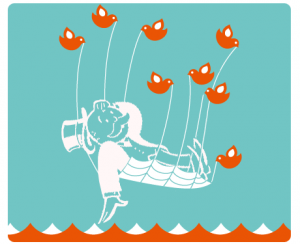 Plenty has already been said about Twitter and how it has changed social networks. One of the areas that is not talked about enough is the impact consumer engagement can have on your product lines.
Plenty has already been said about Twitter and how it has changed social networks. One of the areas that is not talked about enough is the impact consumer engagement can have on your product lines.
I am going to use Adobe Dreamweaver as a case study to demonstrate the various kinds of customer tweets and how Adobe could be positively engaging their Dreamweaver customers on Twitter. I’m picking on Adobe a little bit because I think their current Twitter Dreameaver account isn’t very engaging and could be a valuable resource to the company.
Millions of Twitter users are talking about what they are doing, experiencing or interested in at any moment in time. That practicality guarantees that someone, somewhere is talking about your products or service. You can group these tweets into five categories:
- Praise: The best kind of Tweets. Spontaneous endorsements from actual customers.
- Problems: Oh oh, someone is having a problem with your product or service and they are complaining in a public space! Quick, turn that negative into a positive by showing your commitment to customer service and a speedy resolution.
- Solution: Congratulations, someone has figured out that your products or services are actually helpful at solving some kind of problem. Even better, they are telling others about it.
- buzz: Sometimes your product or service just because part of a conversation.
- Pirate: Some has just posted a link to a message board or another new “warez” site. Oh great, yet another avenue for pirated software to make it into the hands of your potential customers.
Classifying the types of messages that are likely to be generated by your customer base makes it easier for your marketing team to create workflows and policies for corporate communication. You need to create policies that can engage these users and have a positive influence on the twitterverse.
Praise Tweets
 These are the best kind of tweets, and I would typically try to do three things:
These are the best kind of tweets, and I would typically try to do three things:
- Retweet: It shows people on twitter that others are very happy with your products. It will also encourage the original twitter user to say more good things about you in the future.
- Follow: Following the person will not only encourage them in their original tweet, it will make them feel like you are more engaged with them. Engaged customers are happier customers and more likely to recommend your products to others.
- @ reply: You can also encourage them to try out specific features of the product. This is for their benefit and the benefit of those that follow you.
Problem Tweets

When you start seeing tweets where customers are having problems with your products you have two issues to resolve.
- Did they just find a new bug, and if so you need to get your developers on it.
- Can you resolve this customers problem?
In a situation like this, I like to publicly engage the customer and ask him to Direct Message (those are messages sent privately between twitter users) for details regarding his problem. If there is an easy solution (like an updated release) make sure you also tell him that publicly. If this is an open, unresolved issue, privately tell him that the dev team is working to resolve it and ask if he would like to be notified when a update is released. It shows this customers that you’re a company that cares about their customers. Even if you can’t immediately resolve their problem, it can turn a frustrated customer into a content, possibly happier evangelist for your products.
Solution Tweets
Of course your software solves a problem, but when a customer says it, it carries a lot more credibility. These are a lot like “Praise tweets” except more substantial so I recommend following the same retweet, follow, and @ reply philosophy.
Buzz Tweets
There typically isn’t much you can do to engage a customer that just casually refers to your product. What you can do however is keep a monthly tally of the number of buzz and positive tweets your products receive as another way to measure brand awareness.
Pirate Tweets
 When someone tweets with a link to a pirated copy of your software or information regarding circumventing your copy protection, they are in violation of Twiter Terms of Use. If you report it, the tweet will be removed and the account can be suspended. What ever you do, don’t engage the Twitterer directly. Instead, flag the account and send an email to copyright@twitter.com
When someone tweets with a link to a pirated copy of your software or information regarding circumventing your copy protection, they are in violation of Twiter Terms of Use. If you report it, the tweet will be removed and the account can be suspended. What ever you do, don’t engage the Twitterer directly. Instead, flag the account and send an email to copyright@twitter.com
Final Thoughts
It is easy to create a Twitter account for your organization or product and start broadcasting content to the world. However, the companies that are really successful on twitter are the ones who actually engage their customers. I want to hear from you. Does your comapny have an engaged twitter policy? What’s stopping you from developing one?

